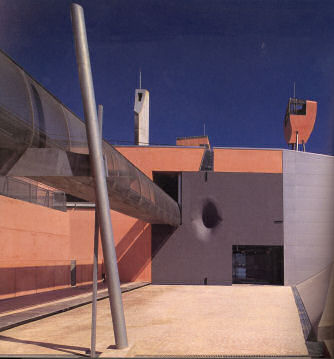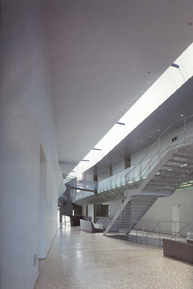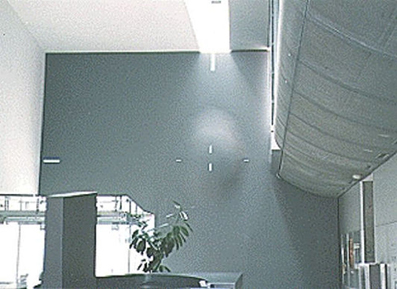
Features:
The museum's unique appearance results from the building
being tilted from the perpendicular and use of curved surfaces.
The entrance is in front of a large recessed 30cm thick steel
plate. It conveys an impression of the power of the arc of the mountain moving through the
museum towards the sea. The curved surfaces were created by bending with just fire and water-a technique derived from shipbuilding technologies.
|
|
Concept:
In the 16th century, a Spanish explorer
landed at the Rias (deeply-indented coastline) port town. He recorded that
the Rias port was as beautiful as the port in his hometown in Catalonia. He described
the local people as nice warm-hearted, and mentioned
three trees half way up the hillside signposting the Rias port. The Rias Ark Museum of Art, devoted to local
culture and history, was built in the overlooking hills ensuring a panoramic
view of the Rias port town. It is a symbol of the artistic creativity of the people of this region.
Style:
The basic structure consist of reinforced concrete together with use of steel framing
in part of the museum. In addition,
a wide area was coated in traditional Japanese white plastering called 'Shikkui.' The
external cladding was made of aluminium alloy in an appearance reminiscent of an
airborne object.
|





